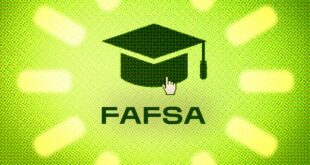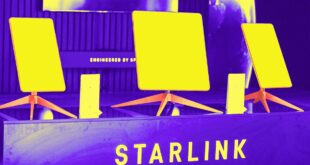If you have federal student loans, two important benefits are ending this month: the student loan repayment “on-ramp” and the Fresh Start program.
From March 2020 through October 2023, federal student loan payments were paused in response to the pandemic. Over the past year, borrowers received additional benefits meant to ease the transition back into active student loan repayment.
As of Sept. 30, these benefits are expiring. Starting in October, missing payments could lead to default, collections and damage to your credit report. If your loans are in bad standing due to missed payments, you have until the end of the day on Monday to apply for the Fresh Start program to get any unpaid loans out of default.
Here’s what will change starting Oct. 1.
Missed student loan payments will count against you
Since student loan payments were paused for over three years, the Department of Education offered a one-year on-ramp for borrowers to help them prepare to make monthly student loan payments again. Although payments were still due during this time, if you couldn’t make them each month, your loans weren’t moved into delinquency or default. Loan servicers were also instructed not to report missed payments to the credit bureaus during this window.
Interest still accrued, and skipping payments meant you weren’t making any progress toward getting out of debt or qualifying for a loan forgiveness program like Public Service Loan Forgiveness.
Starting on Oct. 1, this will change. Late payments can now be reported to credit bureaus, which could damage your credit score. If your payments are 90 days late, your loans become delinquent, and once you miss 270 days of payments, your loans are considered in default. Defaulting on student loans can have a host of negative consequences. Your debt could go into collections, and the government might try to collect payments by garnishing your wages, tax refunds and Social Security benefits.
“Borrowers who miss payments on their federal student loans may be impacted by more severe consequences once the on-ramp ends,” said student loan attorney Adam Minsky. “This can include late fees, negative credit reporting and default.”
Exception: If you’re enrolled in the Saving in a Valuable Education repayment plan, your student loan payments will remain on hold until the courts decide the fate of this debt relief program.
The Fresh Start program will close
The Fresh Start program gives borrowers an easy way to get their student loans out of default. You just have to enroll in the program online or over the phone by Sept. 30 to get your loans back into good standing.
After applying for Fresh Start, the record of default would be removed from your credit report, and you would once again have access to income-driven repayment plans, deferment, forbearance and forgiveness programs.
The government also automatically granted certain benefits to borrowers in default over the past year, such as pausing collection attempts and restoring access to their Federal Student Aid accounts. These benefits will also end for your defaulted loans if you decide not to apply for Fresh Start.
How to manage your student loans moving forward
It’s a confusing time to have federal student loans right now. Not only are COVID-era benefits coming to an end, but your access to income-driven repayment plans has also been restricted for an undetermined amount of time.
There are still steps you can take to manage your education debt and avoid default:
- Review your student loan status: Start by signing into your Federal Student Aid account to review your loan balances, interest rates and repayment status. You can also see who your loan servicers are within your account.
- Sign up for automatic payments: If you can afford your monthly payments, consider signing up for autopay. That way, you won’t miss any bills and will score a 0.25% discount on your interest rate.
- Discuss options with your loan servicer: If you can’t afford payments, call your loan servicer to talk about your options, ideally before you miss any bills. Although access to IDR plans is currently limited, the loan servicer may place your student loans into an interest-free forbearance.
- Get loans out of default: If you have loans in default, consider applying for the Fresh Start program by the end of the day on Sept. 30. If you miss this deadline, consider consolidation or rehabilitation to get them back into good standing. Consolidation offers a faster path to getting out of default, but rehabilitation can remove the record of default from your credit report.
- Explore the PSLF Buyback program: The PSLF program offers loan forgiveness after ten years of working in public service. If you’re a teacher or public service worker who has already fulfilled ten years of service, you may be able to “buy back” months spent in deferment or forbearance so you meet the “120 qualifying payments” requirement for PSLF. You can find more information on this PSLF Buyback opportunity here.
 meganwoolsey Home
meganwoolsey Home



